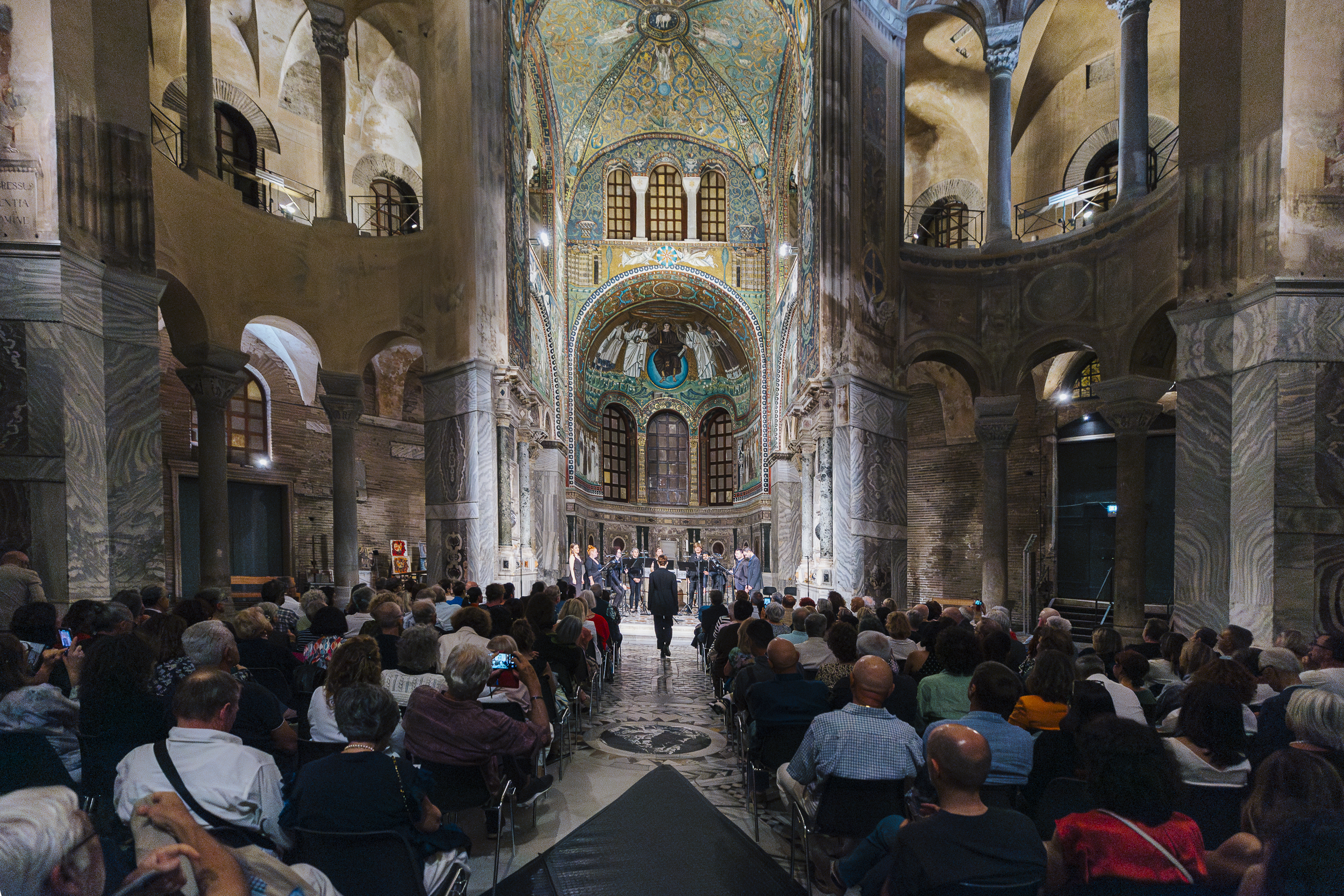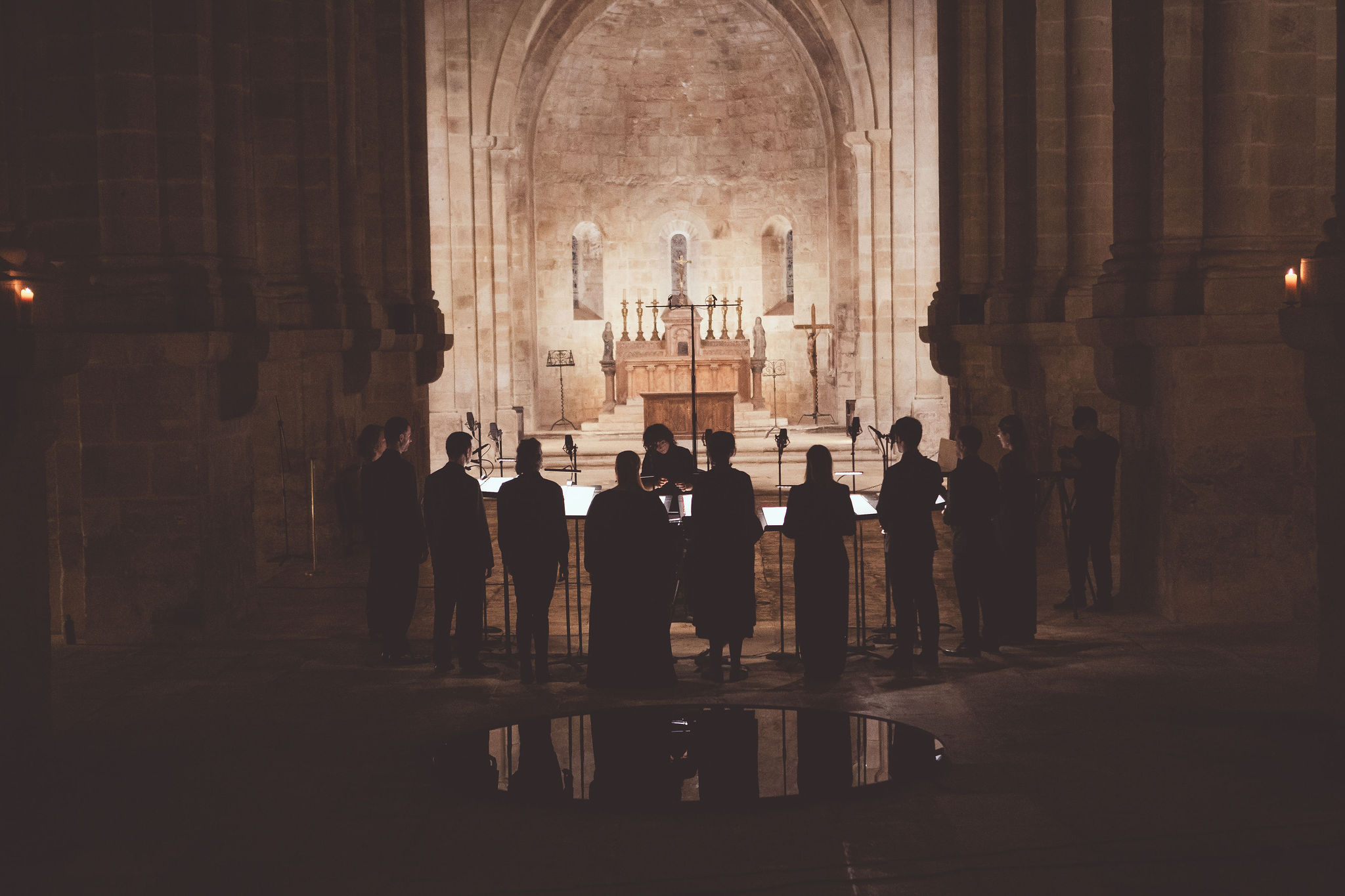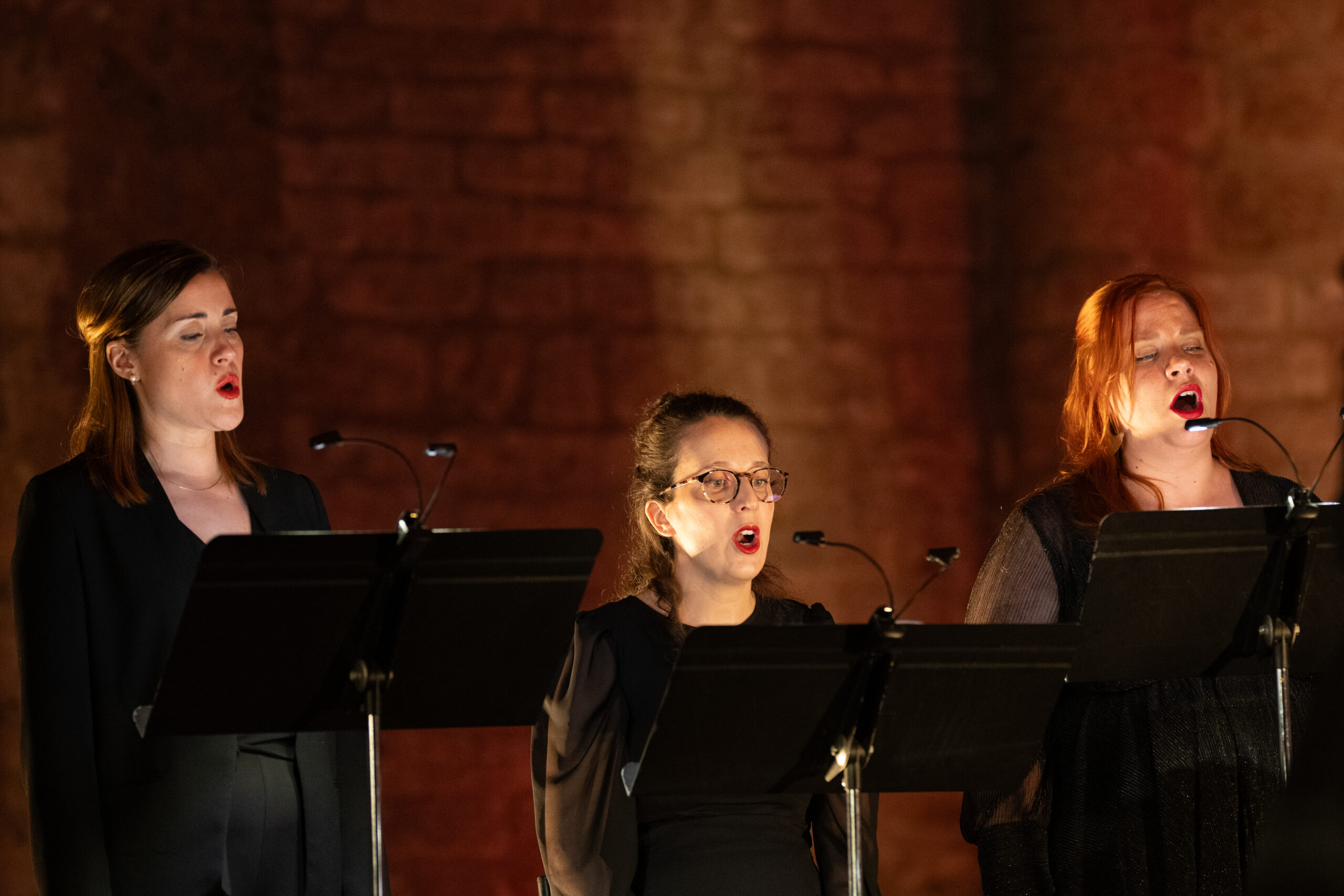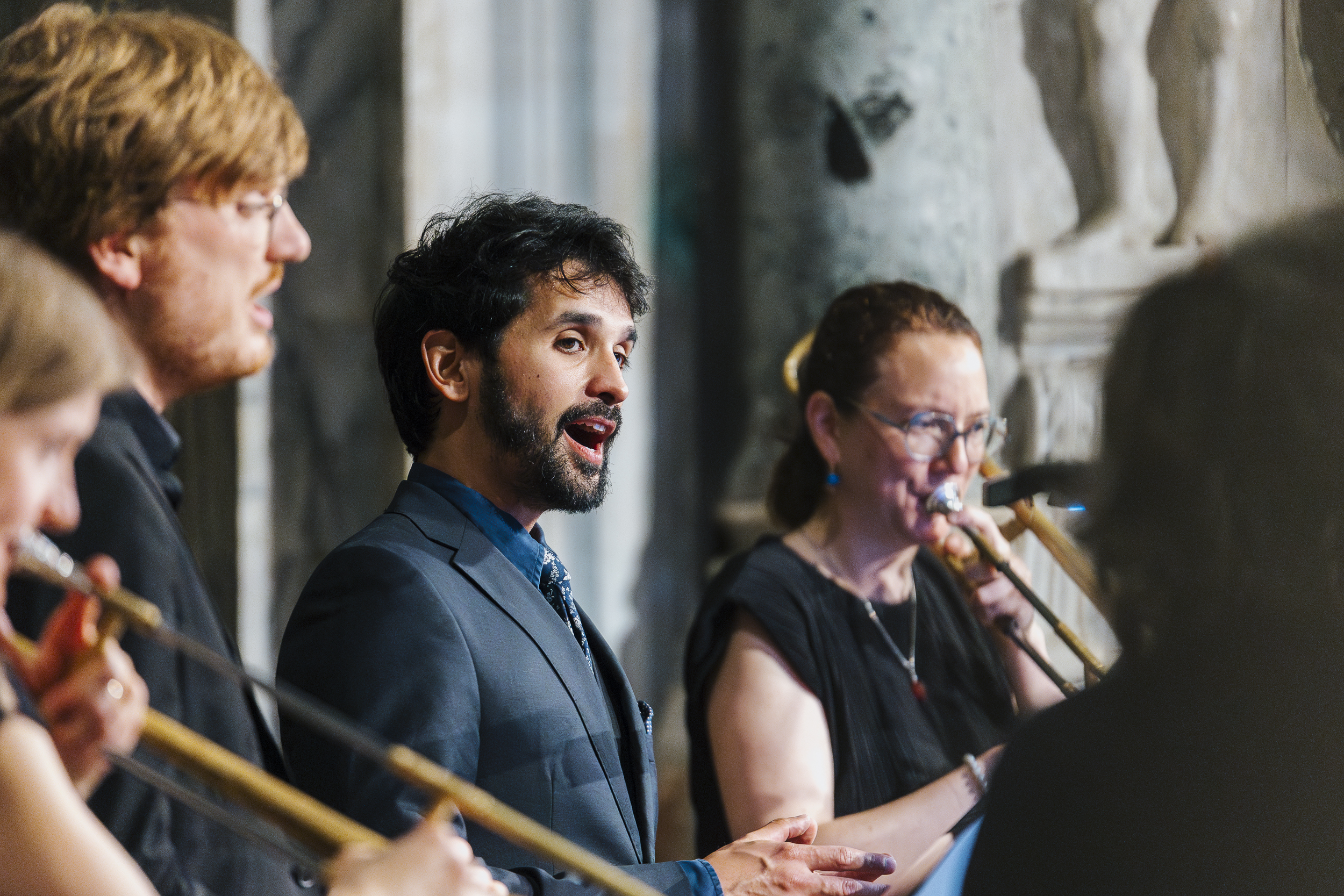
MARIA NOSTRA
Songs of the Marian cult in the Mediterranean
Traveling between the Western Middle Ages, the Byzantine heritage and the Eastern Christian tradition, the Irini Vocal Ensemble highlights the different figures of the Virgin and her cult, which finds a particular resonance in the Mediterranean. From the almost erotic celebration of the Young Girl in Bloom, reminiscent of ancient pagan rites, to the lamentation of the Mother, the earthly woman confronted with the death of her only child, to the praise of the Queen of Heaven, the universal Mother interceding for humanity, it is an image, both one and multiple of the woman, that we see taking shape through the epiclesis of Mary.
The program presents Greek, Lebanese, Syriac and Cypriot Orthodox chants, excerpts from the Vermeil Book of Montserrat (14th century, Spain), and Italian Lauds from the 13th century.
From one shore and one sound to the other of the "Mare Nostrum", the Irini Ensemble (whose name means "peace" in Greek), invites you to discover the diversity and musical richness of the Marian cult in the Mediterranean.
Sacred repertoire of the Byzantine & Eastern Christian rites.
The Byzantine rite chants in Greek ("Axion Estin", "Basilissa tou Kosmou") come from the tradition of the Orthodox Church, which claims to have been founded in the first century (for the Greek Church) by the Apostle Paul. Since this church relies on the preservation of a heritage that has not been reformed since the Second Council of Nicaea in 787, it is difficult to date the songs that come from it, all the more so because, although the rules governing their performance are fairly strict, the singers of the Byzantine tradition mix written and oral transmission, which causes mutations in the musical structures. It is sometimes difficult to differentiate between the parts of the melody that are derived from the radical noted in the manuscripts and those that have been fixed through orality from improvised ornaments. This repertoire therefore has a certain timelessness. It is both immemorial and kept alive by the Orthodox Christian rite and the singers trained at Mount Athos and in the great centres of learning of the Byzantine technique, which is extremely specific and codified.
Similarly, non-liturgical songs of sacred inspiration do not have an exhaustive dating. This is the case for "Mana mou" (a fine example of the propagation of a traditional heritage, based on an 18th century Anglican hymnal whose melody can be found in Lebanon, Greece, but also in "Adiu pauvre Carnaval", a song that is well known to the public.This is the case for "Mana mou" (a fine example of the spread of a traditional heritage, based on an eighteenth-century Anglican hymn, the melody of which can be found in Lebanon and Greece, but also in "Adiu pauvre Carnaval", a well-known song from the Provençal tradition) or for the Cypriot litany calling for rain (an ancient pagan heritage) "Panagia tou Kykkou, as well as for "Kyra mou Portaitissa" (a festive prayer addressed to the Icon of the "Virgin of the Gate") or for the "Miroloi de la Vierge" (the "miroloi" are songs coming from a funerary tradition of cathartic use which consists in the wife, mother, daughter, sister etc. of a deceased person, composing a song for the deceased. The wife, mother, daughter, sister, etc. of a deceased person composes a funeral song that is sung only once at the time of burial and that the bereaved person forgets immediately afterwards. The poet
Loudoviko ton Anogeion has made important collections of them).
The Syriac Ave Maria in Aramaic, the language of Christ, "Shlom Lekh" opens Irini's programme and naturally imposed itself as a call for peace, a memory and an awareness of the fact that in the East, dozens of Christians are killed every day for their faith, and beyond that, the entire Syrian people suffer and die between Charybdis and Scylla, dictatorship or fundamentalism.
Medieval Catholic Repertoire
The Laudario of Cortona
"In the middle of the 13th century, in Tuscany, under the influence of St Francis of Assisi, popular songs were created to exalt the Incarnation and the saints. This was the time of the first "mysteries", performed by the population in front of the churches, of the first "cots", of the processions of the guilds of craftsmen celebrating
and singing their patron saints. From this period, we still have a set of manuscripts called the "Laudario of Cortona", a set of "lauds" written in old Tuscan, and whose musical notation is that of the Gregorian (staff of 4 lines, square notes). It is one of the oldest surviving manuscripts of popular music in the vernacular. J.B. Baconnet
These joyful and lively praises offer a very interesting link between the Gregorian heritage and what gradually became the Italian secular style that would give rise to the "frotole" a century later. If the melodic designs oscillate between sacred ("Ave Donna santissima") and secular ("Fami cantar") heritage, the texts are clearly of troubadour inspiration (the latter fled en masse to Italy after the Albigensian crusade) and the praise of the Virgin is almost erotic ("Laude novella").
The Vermeil Book of Montserrat
"Because the pilgrims want to sing and dance to stay alert at night in the church of Blessed Mary of Montserrat, but also in the daylight. Moreover, singing is only allowed in the church if it remains chaste and pious. It is for these more or less good reasons that these songs were composed. They should therefore be used with modesty, taking care not to disturb those who are immersed in prayer or contemplative devotion." Vermeil Book of Montserrat
An essential part of the medieval repertoire, and probably the best known work to the general public. These songs were intended to be delivered to the pilgrims of Montserrat, a primordial abbey in Catalonia, in order to teach them a "chaste and pious" repertoire. Indeed, the figure of the pilgrim in the Middle Ages is much closer to that of the wandering groups of "marginals" and other punks of the 21st century than to that of our current pilgrims. Life was hard on the roads and the journeys were long. The eternal travellers that are the pilgrims therefore organise themselves into small groups capable of protecting themselves with sticks from highway robbers and whose faith, by dint of discussions and exchanges along the roads, far from society, tends to deviate more or less strongly from the Dogma, hence the need to provide them with songs ... for discipline! This music, written down in manuscript in the 14th century, is astonishing. Century is astonishingly modern, especially the "O Virgo splendens" which takes away from Tallis or Varèse any primacy over sound spatialization.
The Cyprus Manuscript, Torino J.II.9
In the 15th century, Cyprus was under French rule, in the hands of the Lusignans. Ideally situated opposite Jerusalem, it provided a military base for the crusaders. The manuscript from which this motet comes has been identified as being destined for the court of Cyprus, notably by references to Janus de Lusignan, who died in 1432, King of Cyprus. The musical pieces contained in this collection are varied, secular motets and religious motets, and are true jewels of the Ars Subtilior, of a rare complexity, combining hiccups, counterpoint, polyrhythm and a great refinement in modality. Unfortunately, their difficulty of execution makes them rather rare and rarely performed pieces. This motet of praise to the Virgin is multitextual and superimposes binary and ternary rhythms
From one shore and one sound to the other of the "Mare Nostrum", the IRINI Ensemble (whose name means "peace" in Greek), invites you to discover the diversity and musical richness of the Marian cult in the Mediterranean through the centuries.
Shlom Lekh (Syriac Ave Maria in Aramaic) ● 2mn
Laude Novella(Laudario di Cortona, Italy, 13th century) ● 3mn
Mariam Matrem(Vermeil Book of Montserrat, Spain, 14th century) ● 4mn
Axion Estin (extract from the Liturgy of St. John Chrysostom) ● 3mn
Ave Donna Santissima(Laudario di Cortona, Italy, 13th century) ● 3mn30
O Virgo splendens(Vermeil Book of Montserrat, Spain XIVth century) ● 3mn
Mater alma(Manuscript of Cyprus Torino J.II.8 France/Cyprus 15th century) ● 4mn
Fa mi cantar(Laudario di Cortona, Italy, 13th century) ● 3mn30
Basilissa tou Kosmou (psalm, nuns' song, Greek Orthodox) ● 4mn
Miroloi of the Virgin (Mourning song, Asia Minor) ● 5mn
Mana mou, (Maronite Good Friday hymn, text by Nikos Gatsos) ● 2mn30
Hey! Kyra mou Portaitissa! (Traditional, Dodecanese.) ● 3mn
Panagia tou Kykkou (Litany of the call of the rain, Cyprus.) ● 5mn





